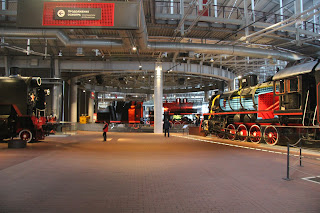The GAP is a collection of smaller rail trail projects linked together almost with no miles on the streets. It is why it attracts all types of cyclists, not just the strong and fearless riders, and why it is considered a gold standard of long-distance cycling. Similarly, there are a number of shorter trails east of Pittsburgh and north of Philadelphia for the GPP to follow. The longest, the D&L Trail, connects Bristol (northeast of Philadelphia) to Allentown and beyond, largely following an old canal towpath. Similarly, the Red Creek Valley Trail runs 41.8 miles east from the Allegheny River towards Brookville.
Totaling 534 miles, the GPP would run through across north-central Pennsylvania, passing by the geographic center of the state near Bellefonte, before turning south to follow to Delaware River. The route would follow railroad right of way or canal towpath, much of which already exists or planned for trail conversion. The longest on-road section would be 7.2 miles of low-stress streets near Bellefonte. Other on-road sections would be low-stress local streets or include a cycletrack or protected bike lanes on higher stress roads.
The trail is 47% complete, approximately 251 miles. However, some sections may need upgrades such as the D&L Trail which follows an old towpath and is in many places, just a single track through the grass. The Snow Shoe Trail was designed for ATVs and may need some grading upgrades to for bikes. Other sections are part of planned rail trails such as the Erie to Pittsburgh Trail and the Delaware River Trail or are being assessed by local governments for rail trail suitability. Some sections would follow active railroads such as the idled Kiski Junction Railroad. The Five Bridges Trail is awaiting grant funding with the goal of connecting to the Redbank Creek Trail. The GPP would also connect to other long-distance trails including the East Coast Greenway, the GAP, the Erie-Pittsburgh Trail, and the future D&L Trail extension to Wilkes-Barrie. Unique features of the trail could include a shared Kiskiminetas River rail bridge with the idled Kiski Junction Railroad, similar to Chicago’s Cherry Avenue Bridge and a switchback railroad line near Snow Shoe.
For lodging, there are eight campgrounds relatively close to the trail although all but one is an RV park. Poe Paddy State Park appears to have a pretty campground. The GPP passes through more than 50 communities, some of which have commercial lodging options. As the trail is built out, there is ample opportunity for homestays through sites such as Airbnb or VRBO, especially as many communities are economically depressed.
Even though there are a lot of small communities, the GPP would also pass through remote areas along creeks and rivers. The Redbank Valley, the Five Bridges Trail, parts along Anderson Creek, and Poe Paddy State Park are all relatively remote. North of Jim Thorpe, the only development is railroad tracks. Along the Delaware River north of Morrisville, development is primarily homes and farms.
Building out the GPP will take time and funding but the economic benefits across 50 small-town Pennsylvania towns could pay that back. Knitting existing trail construction efforts together, the GPP could be the next GAP and rival the soon to be completed Empire State Trail. Build the Great Pennsylvania Passage!
Totaling 534 miles, the GPP would run through across north-central Pennsylvania, passing by the geographic center of the state near Bellefonte, before turning south to follow to Delaware River. The route would follow railroad right of way or canal towpath, much of which already exists or planned for trail conversion. The longest on-road section would be 7.2 miles of low-stress streets near Bellefonte. Other on-road sections would be low-stress local streets or include a cycletrack or protected bike lanes on higher stress roads.
David S. Ammerman Trail
The trail is 47% complete, approximately 251 miles. However, some sections may need upgrades such as the D&L Trail which follows an old towpath and is in many places, just a single track through the grass. The Snow Shoe Trail was designed for ATVs and may need some grading upgrades to for bikes. Other sections are part of planned rail trails such as the Erie to Pittsburgh Trail and the Delaware River Trail or are being assessed by local governments for rail trail suitability. Some sections would follow active railroads such as the idled Kiski Junction Railroad. The Five Bridges Trail is awaiting grant funding with the goal of connecting to the Redbank Creek Trail. The GPP would also connect to other long-distance trails including the East Coast Greenway, the GAP, the Erie-Pittsburgh Trail, and the future D&L Trail extension to Wilkes-Barrie. Unique features of the trail could include a shared Kiskiminetas River rail bridge with the idled Kiski Junction Railroad, similar to Chicago’s Cherry Avenue Bridge and a switchback railroad line near Snow Shoe.
For lodging, there are eight campgrounds relatively close to the trail although all but one is an RV park. Poe Paddy State Park appears to have a pretty campground. The GPP passes through more than 50 communities, some of which have commercial lodging options. As the trail is built out, there is ample opportunity for homestays through sites such as Airbnb or VRBO, especially as many communities are economically depressed.
Even though there are a lot of small communities, the GPP would also pass through remote areas along creeks and rivers. The Redbank Valley, the Five Bridges Trail, parts along Anderson Creek, and Poe Paddy State Park are all relatively remote. North of Jim Thorpe, the only development is railroad tracks. Along the Delaware River north of Morrisville, development is primarily homes and farms.
Building out the GPP will take time and funding but the economic benefits across 50 small-town Pennsylvania towns could pay that back. Knitting existing trail construction efforts together, the GPP could be the next GAP and rival the soon to be completed Empire State Trail. Build the Great Pennsylvania Passage!
.jpg)












